by Keith Zaltzberg and Jim Newman
The Commonwealth needs your help preparing a plan to build and protect soil resources. Your ground-level perspective on effective strategies and needed programs to support healthy landscapes, soils, and the services they provide will be essential for creating the Massachusetts Healthy Soils Action Plan. After reading our article, we ask you to follow this survey link before April 1, 2020. Thank you for your time and interest!
Planning for Soil Health
In the Fall of 2020, the Executive Office of Energy and Environmental Affairs is scheduled to release the Massachusetts Healthy Soils Action Plan (MA HSAP). This ambitious plan seeks to protect and build the economic and ecological resilience of the Commonwealth through exceptional soil stewardship. In the past several years, many states have embarked on healthy soil plans and legislation, typically focused on agriculture and water quality. The MA HSAP is unique in that it considers all major land use types, including forest, wetland, turf and managed greenspace, highly impervious built landscapes, and agriculture. The Plan will recommend improvements to existing policies and programs, guide land use planning, identify research needs, support land managers in advocating for and adopting best management practices, and work in tandem with the state’s climate resilience goals.
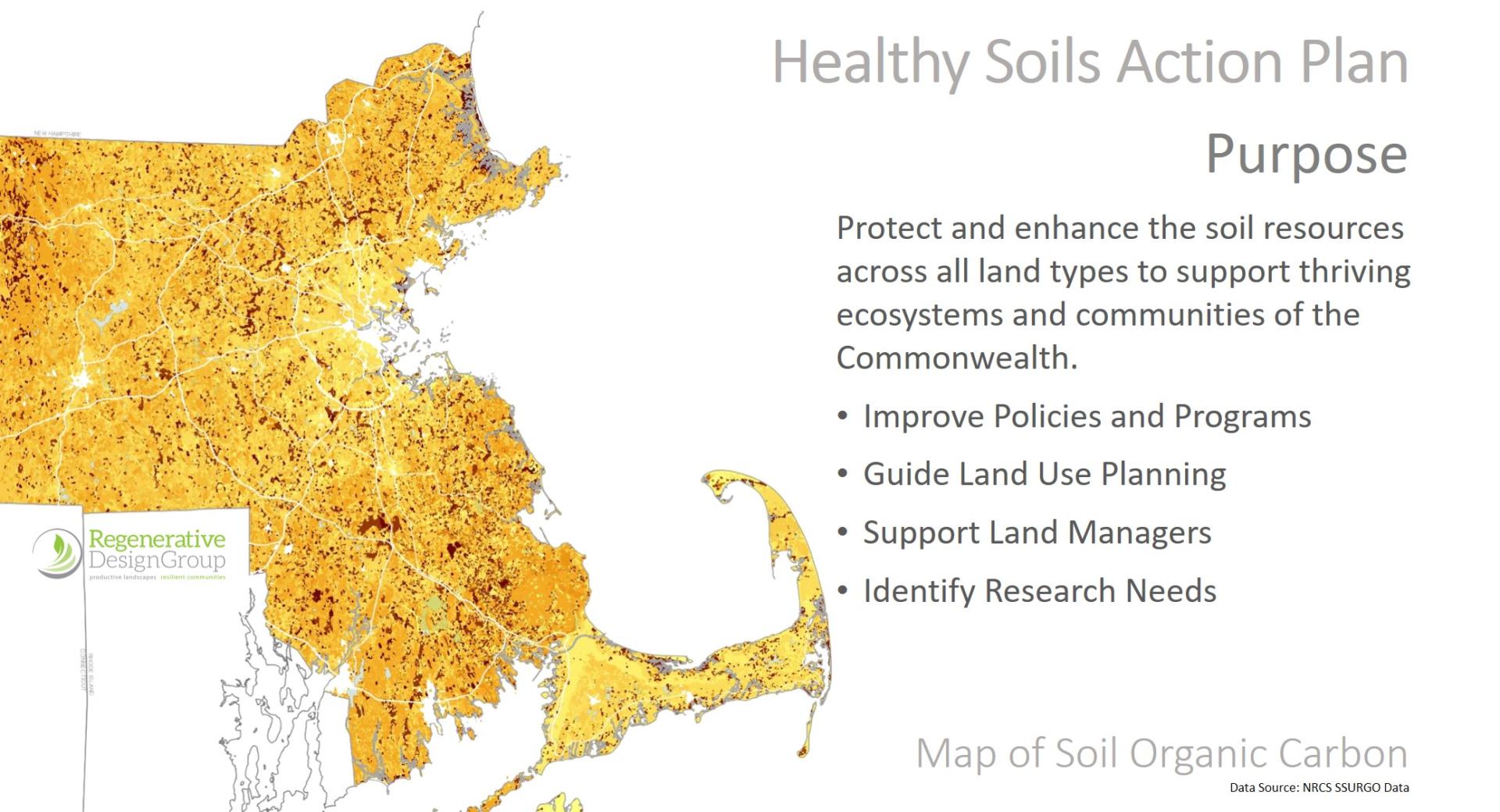
The Massachusetts Healthy Soils Action Plan commissioned by the Executive Office of Energy and Environmental Affairs is intended to improve soil resource management at all levels and across all land types in the Commonwealth.
The firms leading the HSAP planning, Regenerative Design Group and Linnean Solutions, are already part of the ELA family. The Project Team also includes Caro Roszell, Soil Carbon Program Coordinator for NOFA/Mass, Marty Dagoberto, Policy Director for NOFA/Mass, and Eric Toensmeier, carbon farming expert and researcher for Project Drawdown. The project is also getting support from a diverse 30-member Work Group of soil and wetland scientists, conservationists, farmers, foresters, and researchers. A big effort for a big issue.
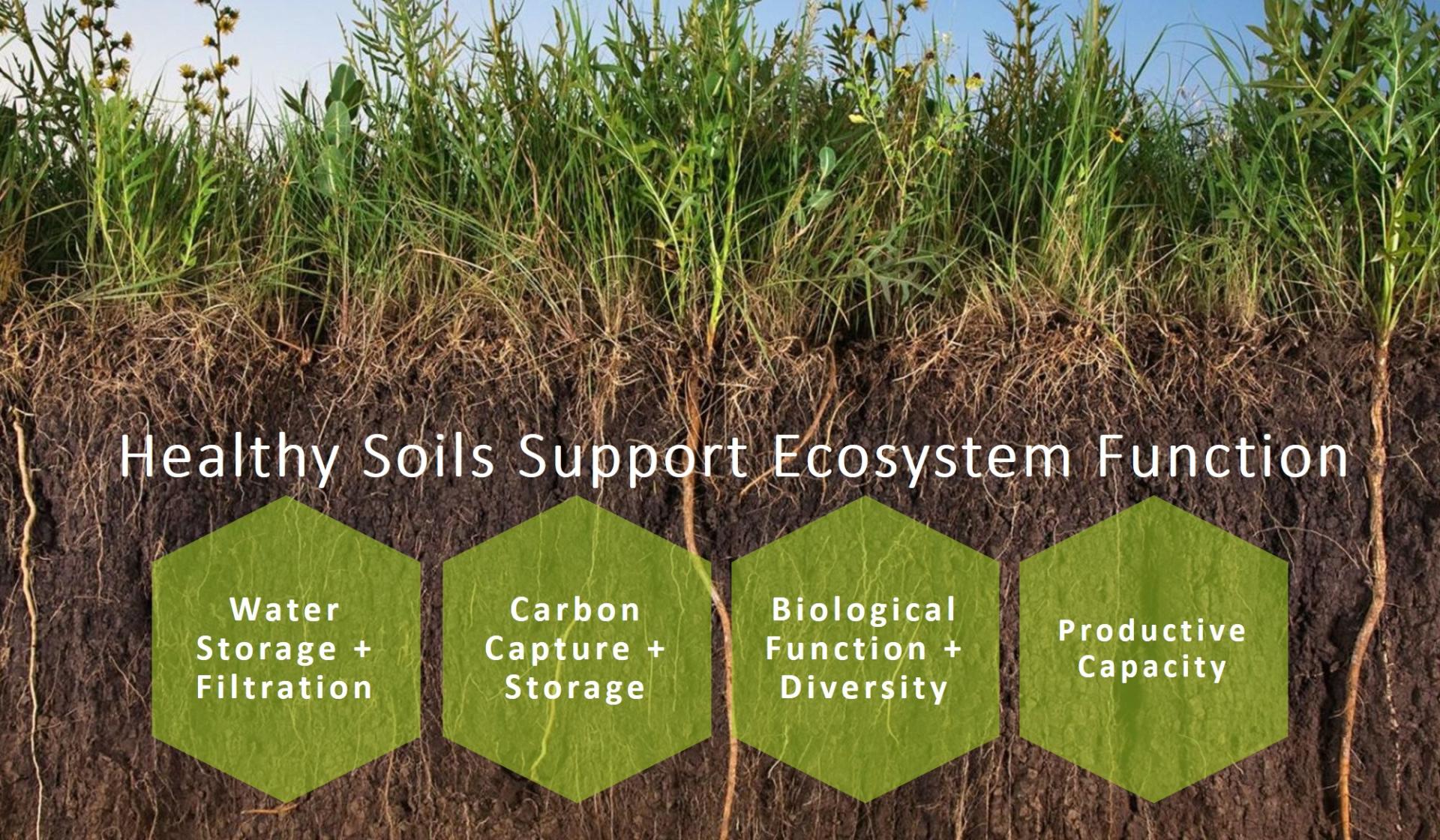
The Functions of Healthy Soils: The NRCS defines soil health as “the continued capacity of soil to function as a vital living ecosystem that sustains plants, animals, and humans.” A living ecosystem provides water storage and filtration, increased soil organic matter, biological diversity above and below ground, and sustained productivity. These functions emerge from the interplay of the physical, chemical, and biological attributes in the soil, land cover, and landscape management. Photo credit: The Institute for Local Self Reliance
The team believes that a successful plan is built on a foundation of understanding about how various land managers and practitioners view soil health, what practices they employ to protect and build soil, and what barriers they face to improving soil health in their work. We’re getting this ground level view through sector-specific and regional listening sessions, while also conducting an extensive literature review and GIS analysis.
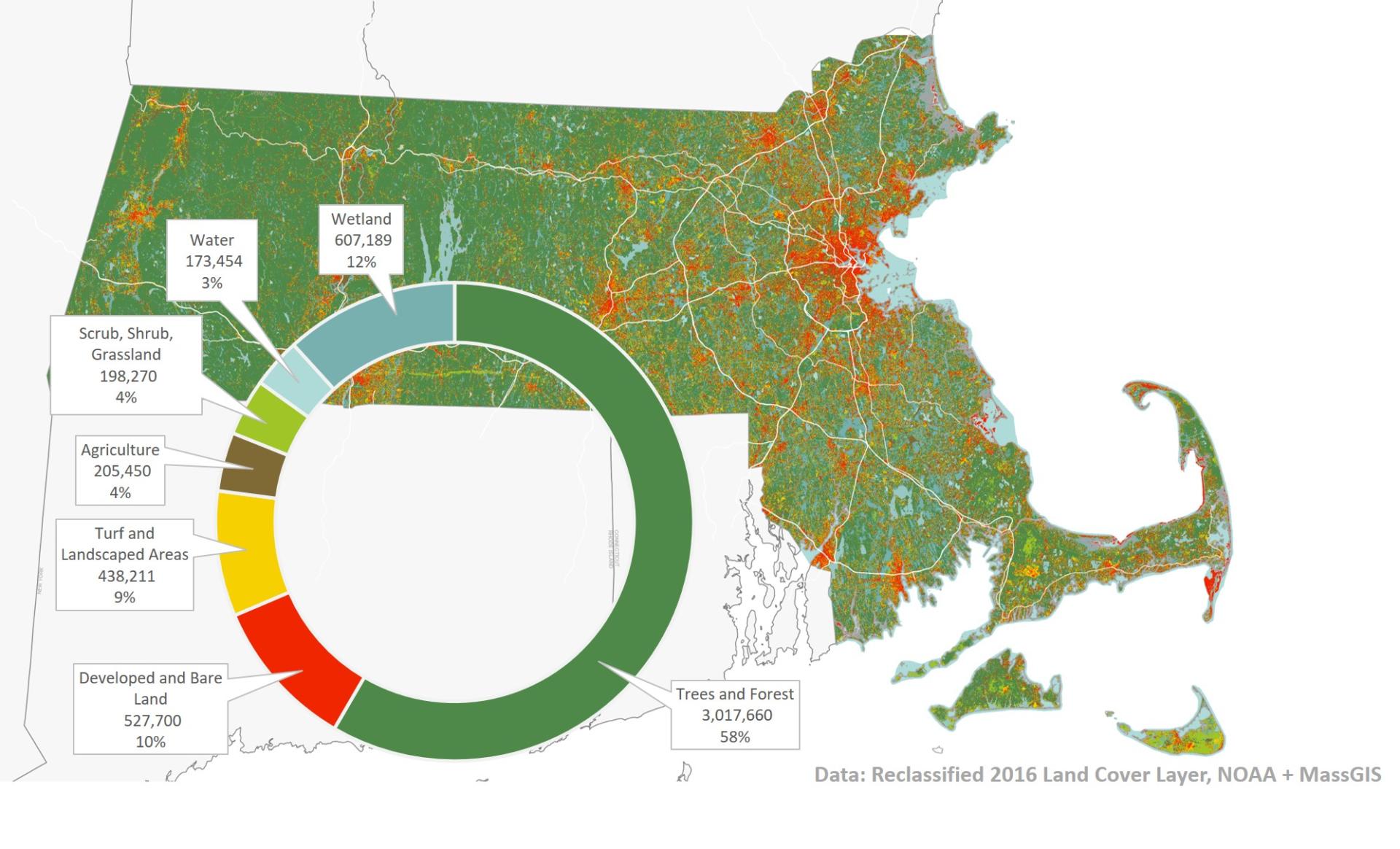
Land Cover and Soil Health in Massachusetts: The 5.2 million acres of land in Massachusetts is unequivocally dominated by trees and forest. These complex ecosystems generate excellent soil health by building and storing soil organic matter, providing stable water availability, and maintaining biological diversity and structure. However, turf, gardens, and parks, which occupy 9% of Massachusetts soils, strongly influence soil performance across the Commonwealth. These more heavily managed landscapes also present an excellent opportunity to improve soil health and water quality through better practices that emulate the structure and function of forested landscapes.
Ecological landscape professionals are uniquely positioned to shape land management policy and practice. We observe and understand landscapes in context, and work to bring about balance, health, and resilience in the landscapes we design, install, and maintain. As we enter another decade of a warming planet, land-based solutions to climate change are taking on increased urgency – and soil is front and center. It’s vital that we begin to implement policy and practice across all landscapes that not only protect soil, but build its ability to capture and store carbon, filter and store water, enhance biodiversity, and support productive capacity. Readers of this newsletter represent a diverse spectrum of landscape practitioners that work across land use types – protecting, testing, managing, and improving soil along the way.
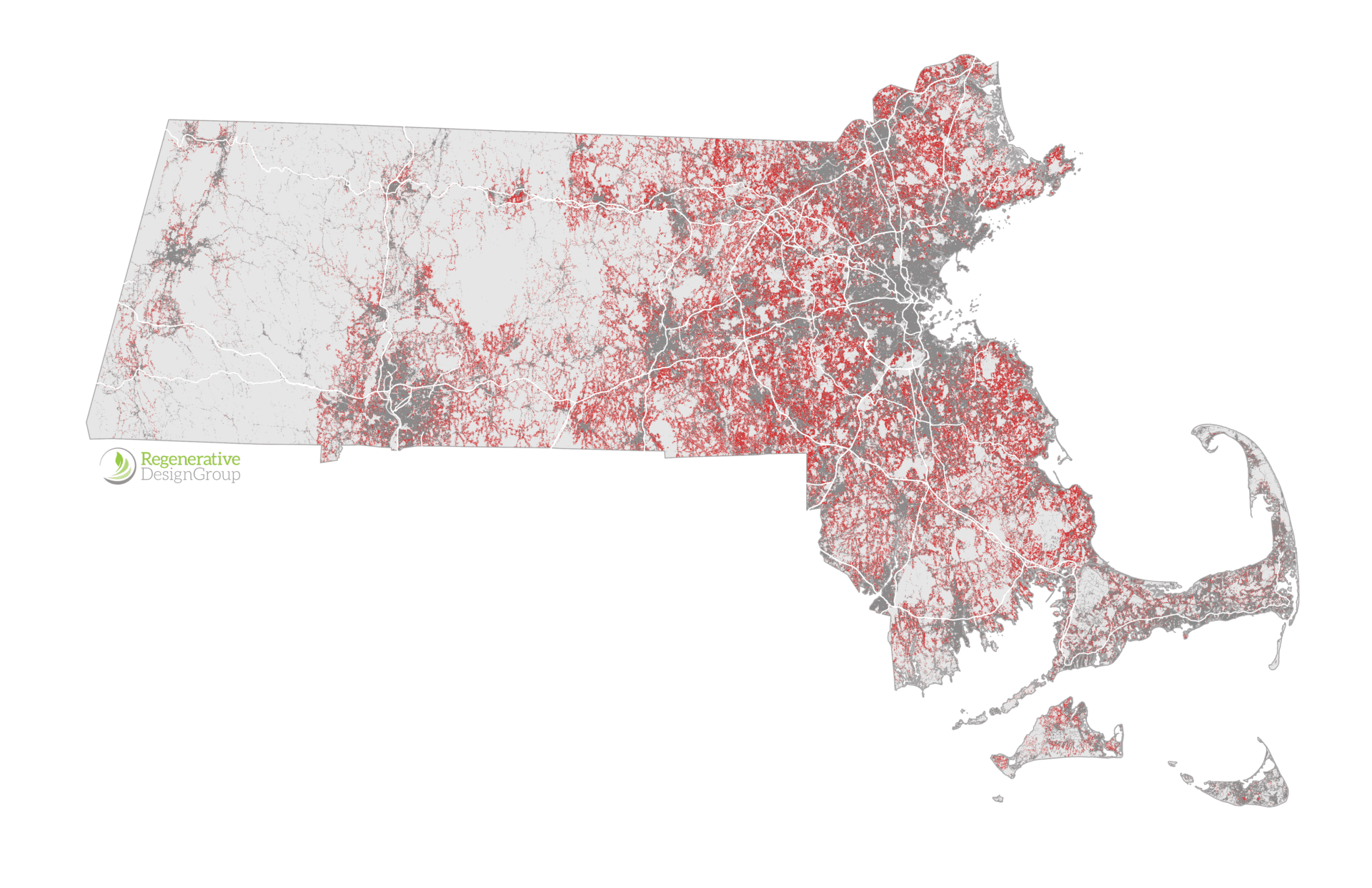
Changes in Land Cover to Come: The New England Land Futures Project predicts that more than 370,000 additional acres are likely to be developed by 2060. These areas, shown in red, expand existing developed areas, shown in dark grey. While conserving healthy soils will be paramount to the preservation of ecosystem services in Massachusetts, reshaping the processes and practices of real estate development are one of the key imperatives identified by our team so far.
Developed Landscapes and Soil Health
We define ‘Developed Landscapes’ as the turf, gardens, and other landscaping found in and around cities, residential areas, commercial, and institutional campuses, parks and golf courses. These landscapes, whether long established or just built, exhibit a wide range of aesthetics, plant compositions, hardscapes, and management regimes, but tend to receive a higher degree of management and inputs than natural areas such as forest fragments.
Typologies within Developed Landscapes include turf-dominated residential landscaping, savannah-like public parks, urban meadows, and the patchworks of university grounds, to name a few. Turf and landscape plantings alone comprise roughly 9% of land cover in MA, or 438,221 acres. This is more than twice the acreage currently identified as agricultural croplands and grasslands.
Our preliminary findings suggest that the number one driver of soil degradation in Massachusetts is the conversion of forests, farms, and other greenspace to low and medium density residential landscapes and sprawling commercial development. According to data generated by the New England Land Futures project, this kind of development is very likely to consume an additional 370,000 acres of greenspace in Massachusetts by 2060. Therefore, any improvements made to the design, construction, and maintenance of developed landscapes could have a significant impact on soil health and the services soils provide.
The work of the Natural Resources Conservation Service, the ELA, and others have shown that the overall health and performance of developed landscapes are closely tied to the quality and health of soil. However, most developed landscapes, as a result of typical construction processes, inherit a thin 6-8” layer of variable quality “top” soil over a highly compacted subsoil. These conditions can limit the performance of turf, trees, and gardens for decades or longer and require higher inputs of fertilizer, water, and other labor to sustain a vibrant landscape. Our HSAP team would like to understand how landscape professionals are addressing these conditions and to develop recommendations that can systematically improve the performance of soils in developed landscapes. Several other states, and a number of communities within Massachusetts, have sought to address this with regulations or bylaws that guide how site developers treat soil during construction or post-construction with soil performance standards and best soil enhancement practices.
Unsurprisingly, our preliminary findings suggest that the impacts of climate change – warmer winters, more frequent and intense flooding, droughts, and heatwaves – are likely to degrade soils through erosion, increased plant mortality, and the loss of soil carbon from warmer soils (NRCS, Toensmeier).
Together, the combined pressures of climate change and development call for more thoughtful design and management of our soil resources. Landscape professionals need to continue to play a vital role in soil stewardship and active soil regeneration. The Healthy Soils Action Plan is meant to help you in this role, by driving the adoption of beneficial practices, directing better development processes, and educating the public.
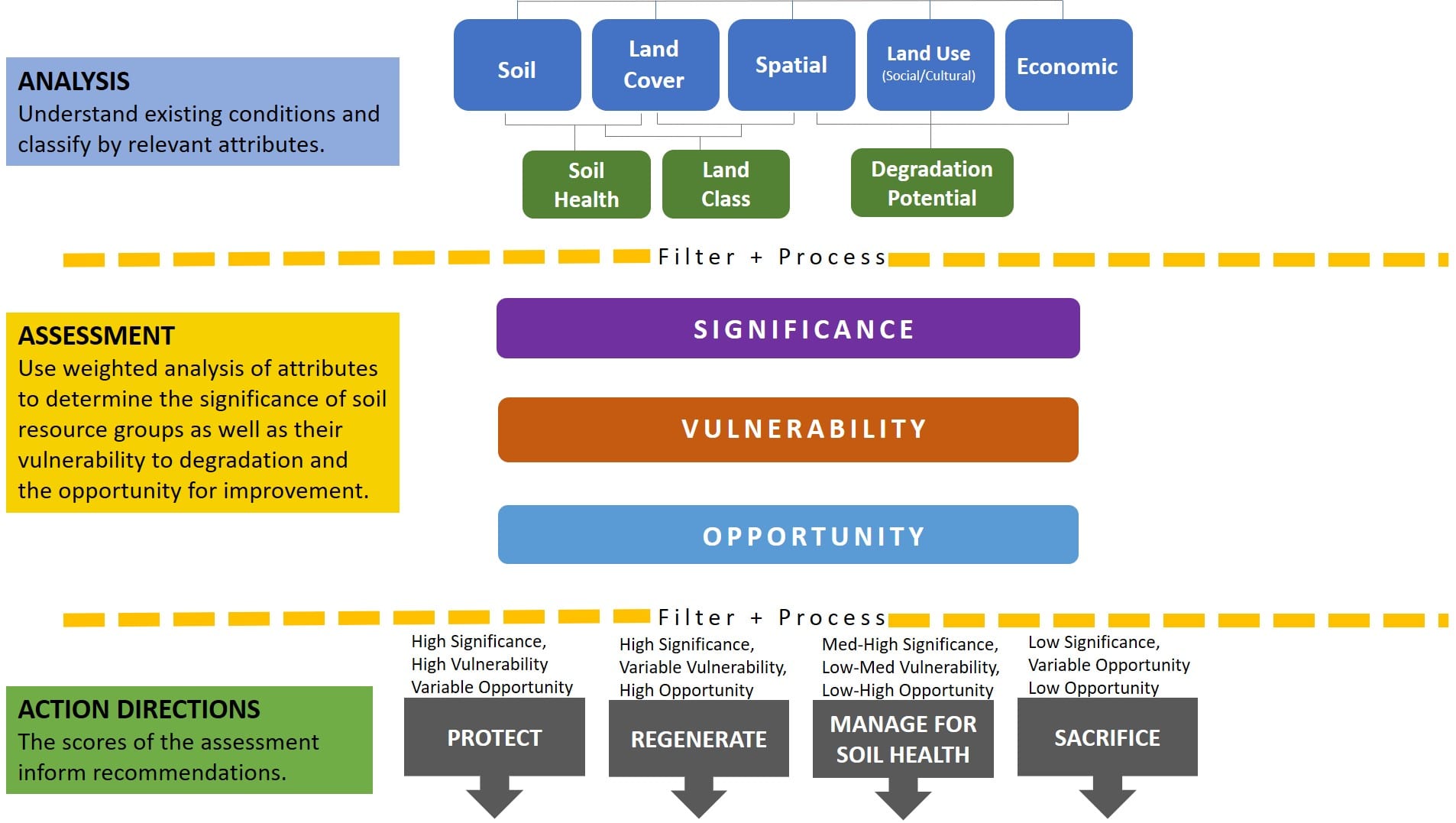
The draft HSAP Assessment Framework is being developed to estimate existing soil health and shape future resource management. Using the GIS platform, this framework can be applied at the State scale and adapted for use at the municipal, watershed, and large site scale. Contact Regenerative Design Group for more information.
Next Steps
Our team is looking at big picture patterns, conditions, and data related to soil health in the state. We’re also getting finer-grained, sector-specific inputs from on-the-ground practitioners, like yourselves. Our hope is that the MA Healthy Soils Action Plan accurately reflects the big picture vulnerabilities of and opportunities for soil health in the Commonwealth and provides a roadmap for realistic actions at the local and regional scale.
If you’d like to contribute to that roadmap, please follow this link to a brief survey. We will be accepting responses until April 1st, 2020. If you have any issues with the link, please contact Genevieve Lawlor at genevieve@regenerativedesigngroup.com.
Resources
If you’d like to know more about healthy soils policy resources across the United States, the database at The Soil Health Institute website is a great place to start. The list is regularly updated and covers legislative, academic, state agency, non-profit, and for-profit efforts.For a comprehensive dive into the science of soil health, and for access to education and outreach publications, check out the NRCS Soil Health Portal.
About the Authors
Keith Zaltzberg is a founding principal at the Regenerative Design Group. For over 20 years he has sought ways to integrate high ecological function and agricultural yields into beautiful built environments. Today his work centers on green infrastructure, productive conservation, and other land-based solutions that promote community-scale regeneration, equity, and resilience.
Jim Newman is the founder and Principal at Linnean Solutions. As a leading professional in climate mitigation and adaptation strategies, Mr. Newman’s work includes resilience analysis, climate mitigation and adaptation planning, ecosystem services assessment, and management, and stakeholder engagement processes to strengthen communities.

